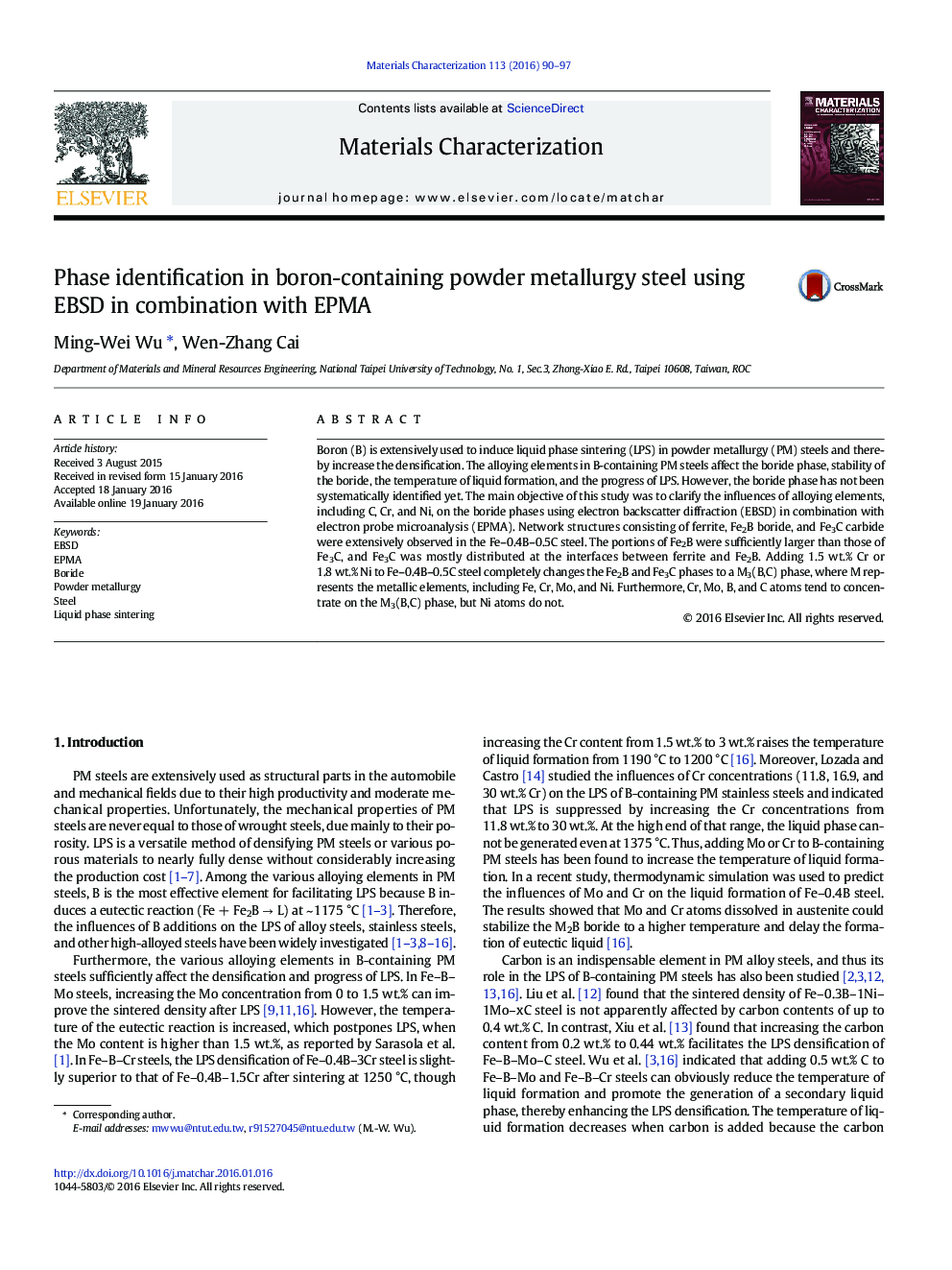| Article ID | Journal | Published Year | Pages | File Type |
|---|---|---|---|---|
| 1570743 | Materials Characterization | 2016 | 8 Pages |
•Network structures consisting of ferrite, Fe2B boride, and Fe3C carbide were extensively observed in the Fe–0.4B–0.5C steel.•Adding 1.5 wt.% Cr or 1.8 wt.% Ni to Fe–0.4B–0.5C steel completely transforms the Fe2B and Fe3C phases to a M3(B,C) phase.•Cr, Mo, B, and C atoms tend to concentrate on the M3(B,C) phase, but Ni atoms do not.
Boron (B) is extensively used to induce liquid phase sintering (LPS) in powder metallurgy (PM) steels and thereby increase the densification. The alloying elements in B-containing PM steels affect the boride phase, stability of the boride, the temperature of liquid formation, and the progress of LPS. However, the boride phase has not been systematically identified yet. The main objective of this study was to clarify the influences of alloying elements, including C, Cr, and Ni, on the boride phases using electron backscatter diffraction (EBSD) in combination with electron probe microanalysis (EPMA). Network structures consisting of ferrite, Fe2B boride, and Fe3C carbide were extensively observed in the Fe–0.4B–0.5C steel. The portions of Fe2B were sufficiently larger than those of Fe3C, and Fe3C was mostly distributed at the interfaces between ferrite and Fe2B. Adding 1.5 wt.% Cr or 1.8 wt.% Ni to Fe–0.4B–0.5C steel completely changes the Fe2B and Fe3C phases to a M3(B,C) phase, where M represents the metallic elements, including Fe, Cr, Mo, and Ni. Furthermore, Cr, Mo, B, and C atoms tend to concentrate on the M3(B,C) phase, but Ni atoms do not.
